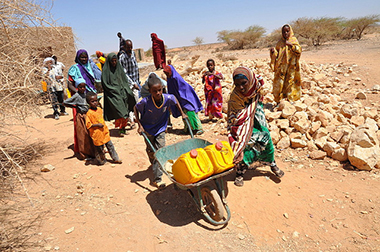The following post by Sara Gustafson was originally published on the Africa south of the Sahara Food Security Portal.
The unusually strong 2015-2016 El Niño cycle has caused widespread drought throughout southern and eastern Africa, triggering delayed planting and crop failures, particularly in South Africa, Mozambique, Malawi, Botswana, Swaziland, and Zimbabwe. The drought, coupled with recent record-high temperatures, could drive as many as 36 million people into increased hunger in the region, according to an article in The Guardian.
In many places, this is the second consecutive season of poor rains. With much of the region dependent on rain-fed agriculture, the below average precipitation has had a devastating effect on crops. This has serious implications for food security in the region; the UN Office for the Coordination of Humanitarian Affairs estimates that more than 20 million people are now food insecure as a result of the drought. Nearly 16 million people in southern Africa alone already face hunger, and that number is expected to rise, according to the article.
The widespread crop damage has caused food prices across the region to soar, according to another article in AgWeb. The article cites estimates from UK’s Overseas Development Institute that see Zimbabwe’s food prices doubling as a result of failed harvests and increasingly costly imports. The latest FAO Food Price Monitoring and Analysis bulletin, released in March, reports record high maize prices in southern Africa, as well as sharply rising grain prices in several countries in eastern and western Africa. These rising prices will clearly have a negative impact on poor populations’ ability to afford food. In South Africa, says The Guardian, households that were previously able to afford two meals per day are cutting back to one, and the poorest households are relying solely on food aid to meet their dietary needs.
Many countries are now calling for increased food aid to help feed their populations. The article cites that as many as 10 million Ethiopians will need food aid, while in Zimbabwe, official estimates of the number of people needing food aid has reached four million. In addition to calling for food aid, Ethiopia has also issued a series of international tenders to buy wheat to increase its domestic food reserves; the latest tender, issued this week, was for almost 500,000 tons of wheat.







